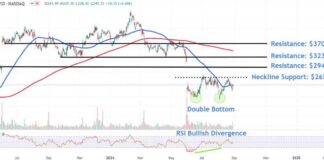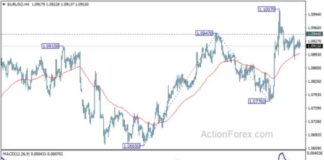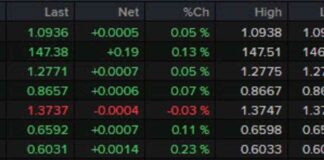Eurozone’s manufacturing sector continues to face challenges as the PMI Manufacturing index remains at a low of 45.8 in August, unchanged from the previous month. This marks the third consecutive month of decline, indicating a prolonged downturn in the industry. The persistent drop in new orders, both domestic and international, has put additional pressure on the European Central Bank (ECB) as they navigate through economic uncertainties.
### Mixed Performance in Eurozone Countries
Country-specific PMI data shows a mixed performance across the Eurozone. Greece leads the pack with a PMI of 52.9, although it is at an eight-month low. Spain and Ireland managed to stay slightly above the neutral 50.0 mark, with readings of 50.5 and 50.4, respectively, but both hit multi-month lows as well. Italy’s PMI improved to 49.4, the highest in five months, but still remains in contraction. France reported a 7-month low of 43.9, while Germany recorded a PMI of 42.4, a 5-month low.
Despite some countries showing slight improvements, the overall picture of the Eurozone’s manufacturing sector remains bleak. Cyrus de la Rubia, Chief Economist at Hamburg Commercial Bank, expressed concern over the worsening conditions, stating, “Things are going downhill, and fast.” The sector has been in recession for 26 months, with no signs of immediate recovery in sight. The continued decline in new orders has dashed hopes of a quick rebound, while the recent increase in input prices since June suggests a possible end to the deflationary phase in the goods sector.
### Rising Selling Prices
For the first time since April 2023, selling prices in the manufacturing sector have risen, driven by increases in countries like France, the Netherlands, Greece, and Italy. This development could complicate the ECB’s efforts to control inflation, as the central bank has been relying on falling manufacturing prices to counteract the persistent inflationary pressures in the services sector. The rise in selling prices may lead to further challenges in managing inflation within the Eurozone.
The increase in selling prices could have various implications for businesses and consumers within the Eurozone. Companies may face higher production costs, which could potentially impact their profit margins. Consumers, on the other hand, may experience higher prices for goods, leading to reduced purchasing power. This shift in pricing dynamics within the manufacturing sector highlights the complex interplay between inflation, production costs, and consumer spending.
### Impact on ECB Policies
The ongoing challenges in the Eurozone’s manufacturing sector are likely to influence the decisions and policies of the European Central Bank. With the sector showing signs of prolonged contraction and rising selling prices, the ECB may need to reassess its approach to managing inflation and supporting economic growth. The central bank’s ability to strike a balance between controlling inflation and stimulating economic activity will be crucial in navigating through the current economic landscape.
The ECB may consider implementing measures to support the manufacturing sector and promote growth. This could include providing financial assistance to struggling businesses, implementing policies to boost domestic and international demand for goods, and exploring ways to address the rising input costs faced by manufacturers. By taking proactive steps to address the challenges facing the manufacturing sector, the ECB can potentially mitigate the impact of the downturn and lay the groundwork for a sustainable recovery.
### Future Outlook
As the Eurozone’s manufacturing sector grapples with ongoing challenges, it is essential to monitor developments closely and adapt to changing economic conditions. The sector’s performance will continue to play a significant role in shaping the overall economic landscape of the Eurozone and influencing policy decisions at both the national and regional levels.
While the current outlook for the manufacturing sector may seem challenging, there are opportunities for growth and innovation that could help drive recovery in the long term. By fostering a supportive environment for businesses, encouraging investment in new technologies and processes, and promoting international trade, the Eurozone can position itself for a more resilient and dynamic manufacturing sector in the future.
In conclusion, the Eurozone’s manufacturing sector faces continued pressures as the PMI Manufacturing index remains low and selling prices rise. The challenges in the sector underscore the need for proactive measures to support growth, manage inflation, and navigate through economic uncertainties. By addressing the issues facing the manufacturing sector head-on, the Eurozone can pave the way for a more sustainable and prosperous future.

















